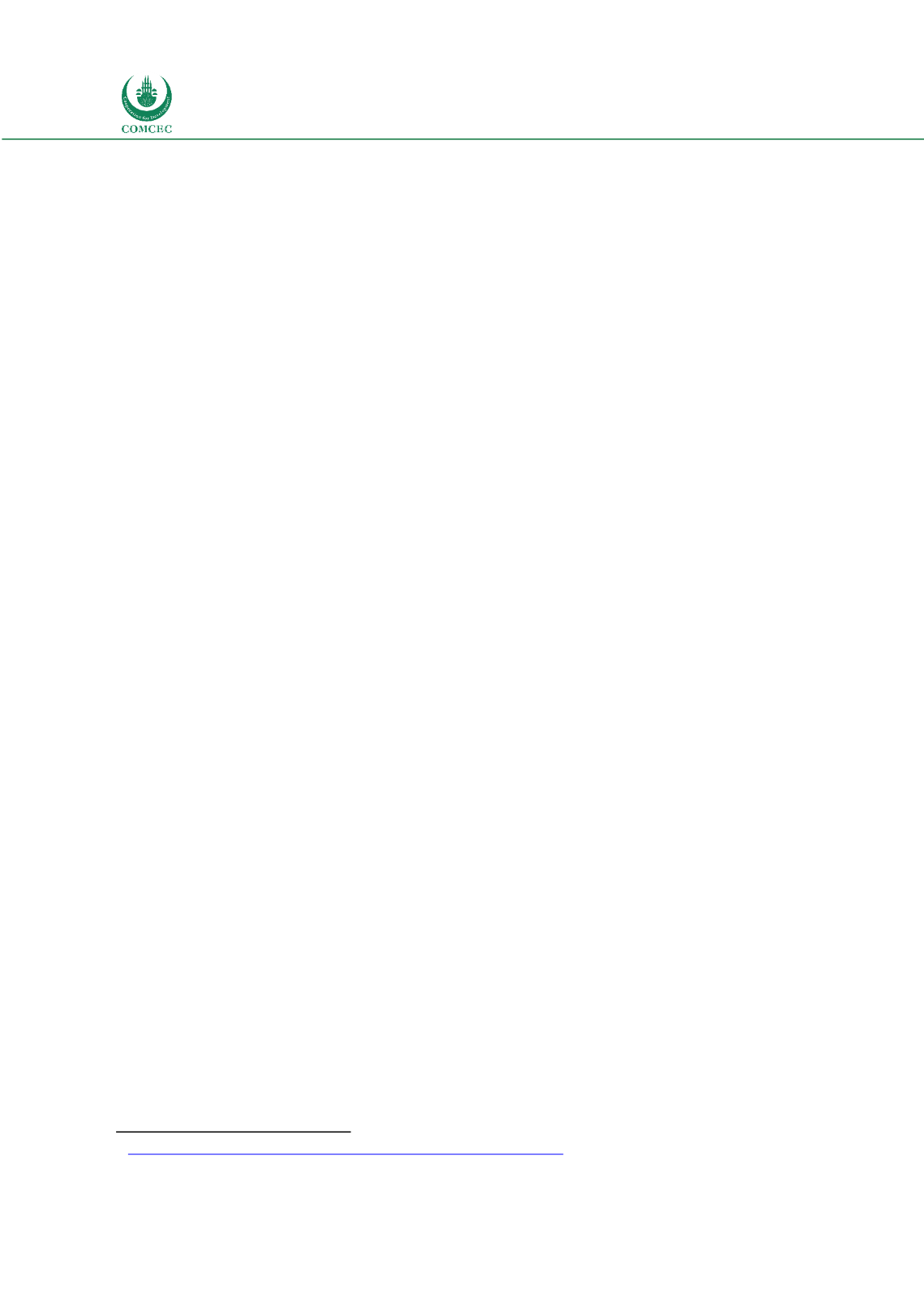

COMCEC Trade Outlook 2019
68
7.
CONCLUSION
After contracting sharply in 2009 due to global crisis, 2017 marked the first year that the world
trade increased significantly both in value and volume terms since the global crisis. Compared
to the previous year, the growth of the world trade decreased from 10.31 per cent to 10.30 per
cent.
The World Bank highlighted that mounting trade tensions, an increase in trade-restrictive
measures including new tariffs and retaliatory measures, volatility in financial markets and
tighter monetary conditions in developed countries, and continuing economic uncertainty
created real challenges for world trade in 2018. These factors and a deceleration in overall
economic activity slowed momentum in global trade, restricting merchandise trade growth to 3
per cent compared with 4.6 per cent in 2017. This downward trend is expected to continue in
2019, with trade projected to grow by just 2.6 per cent
46
.
The total OIC exports which have been on a downward trend since 2012 contracted severely in
2015 and 2016. However, in 2017 and 2018 total OIC exports recorded an increase. Compared
to the previous year (2017), the total OIC exports increased 22 per cent. Meanwhile total OIC
imports increased 4 per cent in 2018. It was 1.7 trillion USD in 2017 and amounted to 1.77
trillion USD in 2018. Product concentration of total OIC exports is very high. The exports of
mineral fuels, oils and distillation products in total OIC exports has been leading sector or groups
of commodities during 2016, 2017 and 2018. This is particularly due to the rise in oil prices
since 2017. This sector was followed by electrical machinery and equipment, pearls, precious
stones, ores, slag and ash and machinery, mechanical appliances. These five sectors as a whole
accounted for 64 per cent of total OIC exports in 2018.
Several factors accounted for the strong performance in total OIC exports in 2018 including the
revival of global economic activity and rising commodity prices. Rising commodity prices
especially that of oil price led to increased export revenues of resource based countries and
increased their import demand. However, although the intra-OIC trade (average of intra-OIC
exports and intra-OIC imports) remained weak since 2014, it slowly started to move up and
reached to 528 billion USD in 2016, 623 billion USD in 2017 and then 673 billion USD in 2018.
It should be noted however that intra-OIC trade is still 69 billion USD below its peak levels
achieved in 2013. In 2018, intra-OIC exports accounted for 17 percent of total OIC exports while
intra OIC imports accounted for 18.8 percent of total OIC imports.
Among the leading countries in intra-OIC trade in 2018, UAE ranked first and followed by
Turkey, Saudi Arabia, Indonesia and Malaysia. Top ten countries accounted for the 76.3 per cent
of the intra-OIC trade. In reality, there is a great diversity among the Member States with regards
to the share of intra-OIC trade to their total trade. For example, while the share of intra-OIC trade
was 62.8 percent in Afghanistan, 42.6 per cent in Togo, 24.8 per cent in Uzbekistan, the share of
intra-OIC trade was as low as 6.2 and 7.3 per cent in Gabon and Guyana.
Total commercial services trade in the OIC reached its peak level in 2014 and recorded as 870
billion USD. Compared to the year 2014, this peak was exceeded in 2018 with 4.8 percent
increase and reached to 912 billion USD. With respect to the structure of the trade in services,
OIC services imports has dominated the services exports in the last decade. Accordingly, the OIC
commercial services exports constituted only about 42 per cent of the total commercial services
trade in 2018. However, services exports grew at an annual average rate of 4.3 per cent while
4
6 https://www.wto.org/english/res_e/booksp_e/anrep_e/anrep19_chap1_e.pdf















